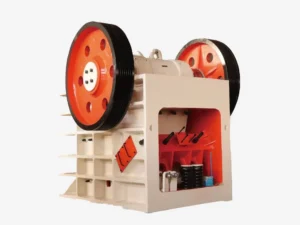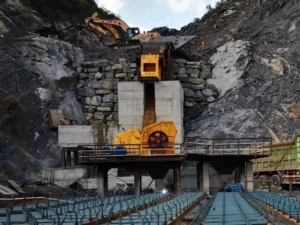Introduction:
In the field of crushers, you might have come across the argument of an impact crusher VS jaw crusher. To some extent, the argument is valid as there are several differences in both these crushers. If you want to find out their significant differences, let’s look at this blog. It will guide you.
What are crushers?
A crusher is a machine grinding and crushing rocks, gravel, and stones into smaller pieces. Its versatile usages always make it the best machinery for commercial purposes. The crushers divide into types; one of the most common types includes jaw and impact crushers. Although you might find some other types of crushers, these are the most useful types. Similarly, the primary purpose of these crushers is almost the same, but these have different features.
What is an impact crusher?

An impact crusher consists of a rotor. The rotor in the crusher allows the crushing of stones or whatever input you provide to it. Thus, the quality or the size of the end product results due to the speed of the rotor. The end product is usually a cube-shaped stone or material.
What is a jaw crusher?

The term jaw crusher describes that this particular crusher includes jaws. Often this crusher comes under the category of a compression crusher. The reason behind this is it uses compression force to operate. It comes with two jaws, and the function of the jaws allows it to crush the input materials. Industries widely use them for a variety of tasks. For example, from mining to construction sites, its usage diversifies. What makes the crusher the best choice is its high output efficiency. It was a simple yet brief intro to the jaw crushers.
Let’s now take you to their differences.
Impact crusher VS jaw crusher- the significant differences
Both jaw and impact crushers work for similar output; however, their crushing styles vary and make them different. To explore these differences, one should read the section below. After reading about their differences, you will perceive a suitable crusher.
1. The working principle of these crushers
How does an impact crusher work? This is something you will always want to know. The main components involved in crushing are the rotor along its hammers and the crushing chamber. The crushing starts when you insert the material to crush in the crusher’s chamber! So, as you insert the material, the hammers start striking the material. The hitting or striking action is continuous and throws the material into the walls of the crusher. The collision of material happens due to the rotating hammers. It helps break the larger pieces into smaller ones and even the granule.
Now let’s move to the jaw-crusher working principle.
How does a jaw crusher work? The crucial component of a jaw crusher is its jaws. Remember that one jaw remains stationary in the entire crushing process, whereas the other jaw moves. Both jaws create a v-shaped passage known as the crusher’s chamber. When you insert the material for crushing, the jaws start their operation. The fixed jaw stays stationary at its position.
In contrast, the moving jaw uses the to and fro motion to break the large materials. The most interesting part of the jaws working is that a specific size of crushed material could only pass down the jaws. That means that once the material has the exact size, it passes down; otherwise, it remains under the action of the jaws.
2. The crushing stage
In the debate of impact crusher VS jaw crusher, the crushing stage of the two products is not the same. Impact crushers can only be used as secondary and tertiary crushing, while jaw crushers can be used as primary and secondary crushing.
As you know, a jaw crusher, also called a primary crusher, usually produces the output in large chunks. Such an output might require further crushing for smooth and ground results. On the other hand, the impact crusher, also called a secondary crusher, does fine crushing; its results are better than the jaw crusher.
3. Material it crushes
Well, the materials described here could vary from one task to another. Therefore, you cannot say there are several limitations to one crusher. The types of materials an impact crusher crushes are the followings,
- Coal
- Clay
- Limestone
The specific raw materials crushed by the jaw crusher are:
- Concrete
- Granite
- Basalt
- Ore
4. The end product result by the crushers
The differences between jaw crusher VS impact crusher take you to the end product result of the crushers. You will find a major difference if you compare the jaw crusher results with an impact crusher. A jaw crusher’s output is large pieces of raw materials. The impact crusher creates fine-sized and quality material, so the output is finer and more shaped than the jaw crusher. Also, the crushing quality is improved than the other crusher’s results. In comparison, a jaw crusher produces dust while crushing. That’s because the material for crushing is large as well hard. Hence, it makes a coarser output product.
5. The overall capacity of the crusher machines
The capacity of the crusher is divided into these factors.
-
Compressive strength:
The strength of the material does not limit the jaw crusher. The overall compressive strength of the impact crusher is about 350 MPa, which is more suitable to strike and crush materials below 350 MPa.
-
Feeding size:
The feeding size of the jaw crusher is much larger than that of the impact crusher. The impact crusher is up to 500mm, and the jaw crusher can reach 1250mm.
-
Production capacity (T):
The maximum capacity of an impact crusher is 800 tons. The maximum capacity of a single jaw crusher can reach 1500 tons. Therefore, a jaw crusher’s capacity is larger than an impact crusher’s.
How to select which crusher to choose?

Finally, the long debate between the two crushers comes to an end. You have now gone through the differences between them. Before selecting any time, you must first clarify your requirement. Investing in any crusher requires a considerable sum; first, roughly map the average quality you want from the crusher. The factors that contribute to the selection of a crusher are listed below.
-
Type of material for crushing
The first and foremost feature of buying a crusher depends upon which material you will crush. Similarly, every material requires a specific type of crushing as it depends on the nature of the material.
-
Size of crusher
The second factor to consider is the size of the crusher. The output of the crushing machine depends upon its size.
-
Price
Before getting into the purchasing decision, first, provide your budget. Every crusher has a different price range which usually reflects the feature it provides. So, look for the machinery that provides the desired features and comes under your budget.
-
Maintenance
Machines constantly undergo rough usages. The striking of heavy stones crushing results in wear and tear on the crusher. Thus, you might not know, but it can break some parts of the crusher. Therefore, always look for a crusher that could quickly get maintenance services.
Conclusion:
Although the impact crusher VS jaw crusher is a long debate, this debate often takes you to the various features a crusher offers. By examining their differences, you could conclude which crusher to purchase. I hope that by reading this article, you can gain something in this area.
